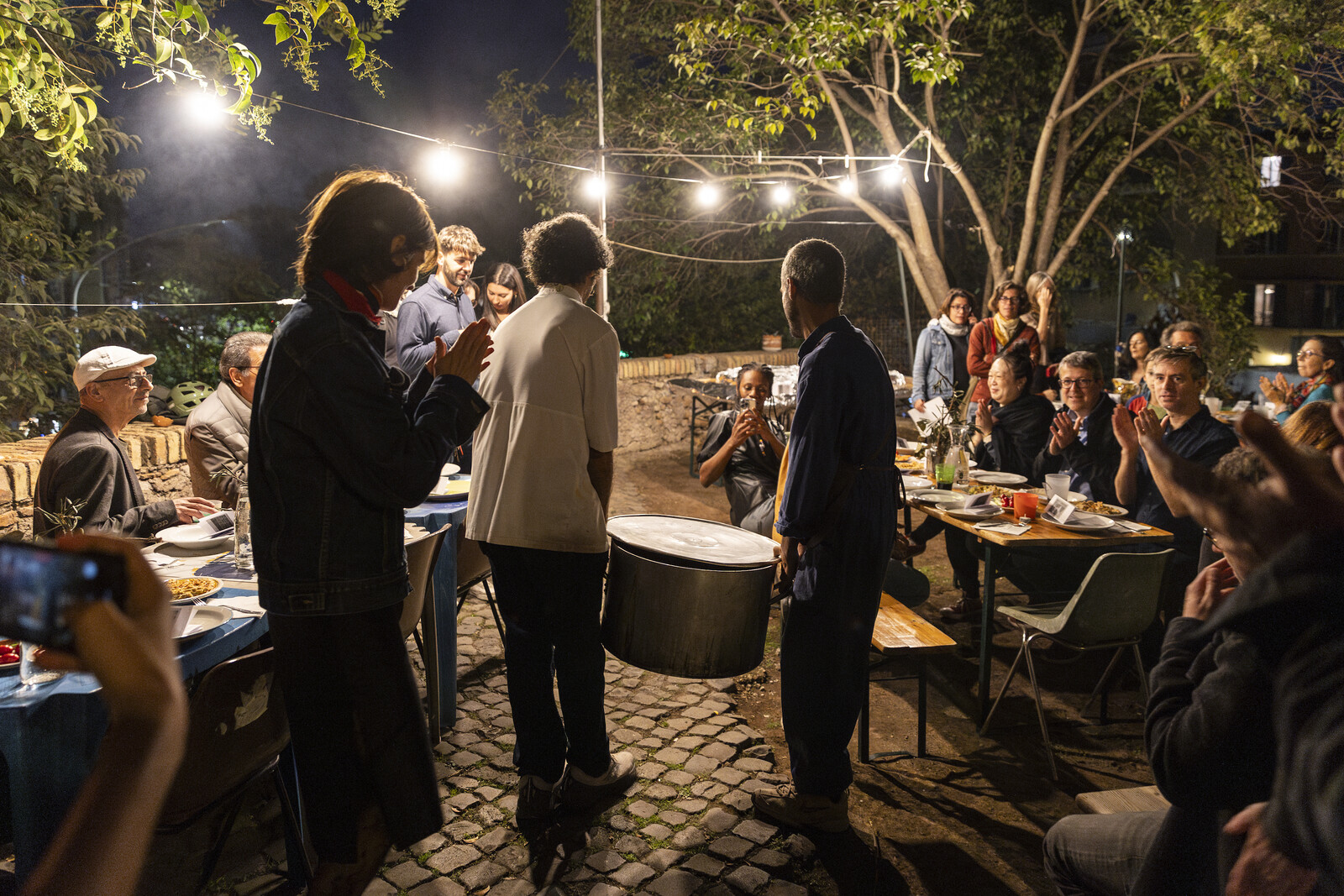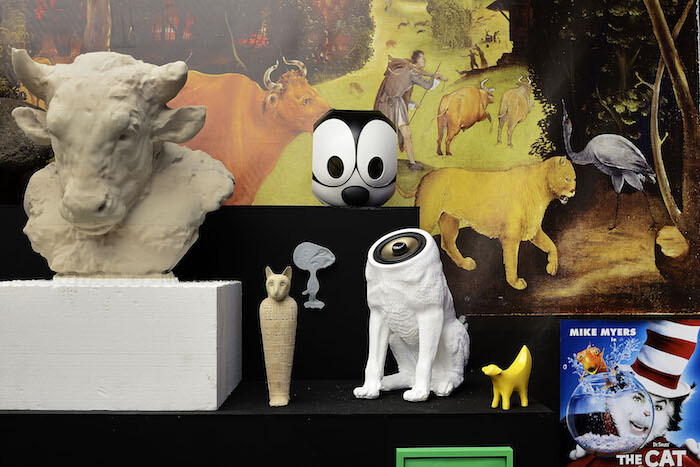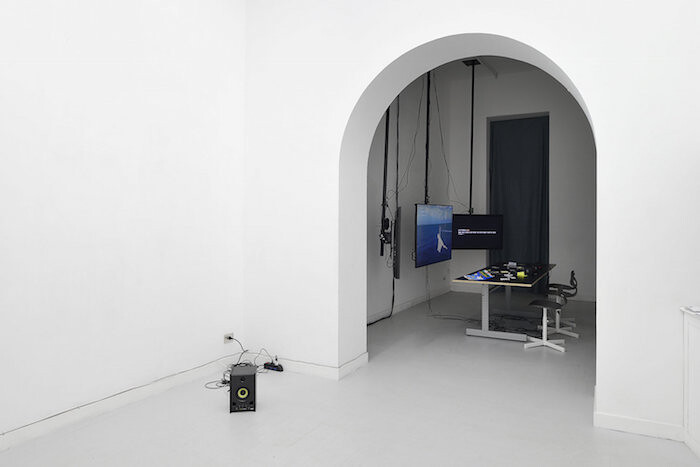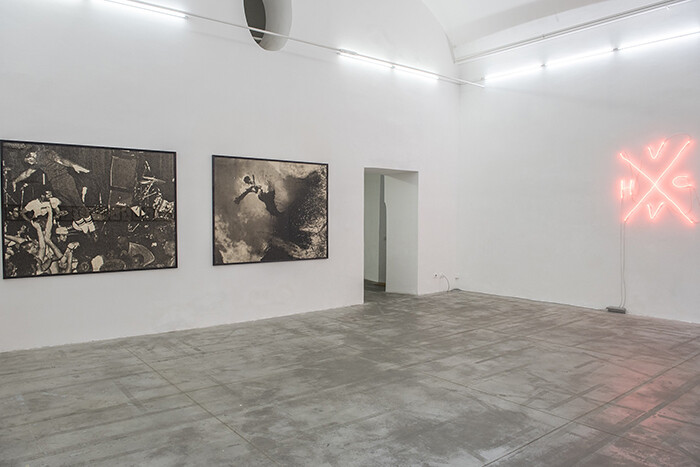Categories
Subjects
Authors
Artists
Venues
Locations
Calendar
Filter
Done
November 22, 2024 – Review
Emily Jacir and Michael Rakowitz’s “That thou canst not stir a flower Without troubling of a star”
Cathryn Drake

In the San Paolo quarter of Rome, artists Emily Jacir and Michael Rakowitz staged a “performative” dinner to commemorate the life of Palestinian poet and translator Wael Zuaiter, executed by Mossad agents at his home in the city fifty-two years earlier. Organized by curatorial collective Locales, it was the final event in a public program focusing on the body as an artistic medium for learning and transformation. Nearly one hundred guests gathered at long tables on the terrace of Città dell’Utopia, an international social laboratory dedicated to communitarian activism located in an eighteenth-century farmhouse that was a trattoria and antifascist hub founded by Augusto Volpi in 1907 and later a refuge for resistance fighters during World War II. Now an anachronistic apparition surrounded by apartment blocks, it is still a welcoming, convivial hive.
The poignant title, evoking the far-reaching repercussions of every action, is taken from a poem by Francis Thompson that Zuaiter quoted in an article published in L’Espresso shortly before his assassination. Zuaiter was the first victim of the Israeli operation Wrath of God, ostensibly targeting those held responsible for the massacre carried out by Black September at the 1972 Olympic Games in Munich. In 1980, several Israeli …
July 21, 2017 – Review
Nick Bastis’s “Sentries”
Simone Menegoi

“Can you see anything?” Lord Carnarvon anxiously asked Howard Carter, who was peering, through a small hole by the light of a candle, into the anteroom of the tomb of Tutankhamun. “Yes, wonderful things!” was his famous answer. Viewers who access Nick Bastis’s exhibition do not see “wonderful things”; on the contrary, because of the contrast between the dazzling Roman summer light and the semi-darkness of the gallery, for the first few seconds we see almost nothing. Nevertheless we have, like the great English archeologist, the impression of being on the threshold of a recently excavated burial space. There is no neon or halogen lamp, only daylight from the entrance door and from an arched window, normally covered, which has been opened for the occasion. A few meters from the entrance the light is already dim, and darkness reigns at the furthest end of the gallery.
At first sight, the only presence in the whole vast space is an old wardrobe. Inside it we discover two cylindrical metal objects that the artist calls “flutes” (Flutes with Armoire, 2017) and two small round shapes that materialize the volume drawn by a key turning in a lock (909, 2017). Which doors are opened …
July 28, 2016 – Review
Mark Leckey’s “UniAddDumThs”
Valerio Mannucci

Mark Leckey’s exhibition at Sant’Andrea de Scaphis, the Roman location of Gavin Brown’s enterprise, is the latest iteration of a series running back to the 2013 Hayward Touring show “The Universal Addressability of Dumb Things.” The original display took inspiration from digital images collected on Leckey’s hard drive, physical instantiations of which were assembled into an eccentric taxonomy. At Kunsthalle Basel, Leckey presented an “ersatz” version of the concept titled “UniAddDumThs” (2015), featuring replicas of the original objects. Considering these previous presentations, in what way does this new project add to the previous ones from which it takes its cue? And to what extent does it need everything that precedes it in order to be understood? Can we individuate a fissure, a difference that makes it unique and independent from its predecessors?
To address these questions, let’s imagine we don’t know anything of Leckey’s previous shows. We walk through the main door of this deconsecrated church to find an orderly arrangement of things. We might ask ourselves, “Is there an order that defines this set of objects? Why are they all together in one room? Why these and not others?” A number of 3D printed objects, two-dimensional prints, and videos are …
June 2, 2016 – Review
Cécile B. Evans’s “Working on What the Heart Wants”
Barbara Casavecchia

— Thank you for the kind words
— :-)
— And thank you for the bonus
This telling fragment of chat, extracted from Cécile B. Evans’s Working on What the Heart Wants (2016), informed my experience of this multichannel video installation, which records a group of humans interacting with and through machines, across timelines and deadlines, to collaborate on a visual project involving the construction of a new so-called person called HYPER; “a system that is a woman,” writes the artist on her website. The users’ exchanges involve technical matters relating to CGI and rendering, along with codified online expressions of feelings (emoticons and adjectives conveying happiness, friendliness, satisfaction), as well as undisclosed amounts of money. Wages and invoices, often popping up in the live-streamed conversations, act as reminders of the bare fact that, although invisible and anonymous, the bodies operating behind the machinic screens are real. Their individual abilities are purposefully mined and rewarded in accordance with their performance. In postindustrial times, etiquette and authenticity are conditioned by the prompt delivery of “services.” And art proves no exception: by “disclosing” her supposedly daily progresses as fully visible and shareable material, Evans maximizes the emotionally charged but otherwise dead time of production. …
January 16, 2015 – Review
Nico Vascellari’s “Codalunga”
Arto Lindsay

Last November, Nico Vascellari moved into the Sala delle Armi in Rome for a month. A huge, rationalist building built in 1934 as a fencing school, and adapted, in 1981, as the Aula Bunker of the court of Rome, it hosted a series of famous trials—namely that of the kidnapping and murder of Aldo Moro, that of the assassination attempt on Pope John Paul II by Mehmet Ali Ağca, and the anti-mafia processes. It’s a long, gloomy, and resonating marble gymnasium.
In the middle of the room, the artist constructed a one-to-one plywood replica sans roof of Codalunga, the studio/gallery/venue he maintains in his hometown of Vittorio Veneto, in the northeast of Italy. Codalunga is where he plies his double trade of artist and musician, trying not to allow either one to become an illustration for the other. Over the course of December 2014 he organized a series of performances and lectures by his collaborators from the art and music worlds: electronic and noise musicians, artists, and curators among them.
At the same time, he installed a show at Monitor, his Rome gallery. For the opening night at the Sala delle Armi, he imported some of the pieces from the gallery show …
October 10, 2012 – Review
David Maljkovic’s "A Long Day for the Form"
Barbara Casavecchia

I saw David Maljkovic’s exhibition in Rome on the same day the Italian association of contemporary art museums (A.M.A.C.I.) had called for a general meeting in the capital, to discuss the impact of the economic crisis and protest against the government’s indifference toward all its requests. The assembly was held in the open-air courtyard of the MAXXI, under the imposing volumes of Zaha Hadid’s concrete mammoth, which opened just two years ago. With its futuristic design and uncertain future, the museum looked uncannily akin to one of the deserted memorials often represented by Maljkovic. And some of the past questions posed by Maljkovic’s trilogy Scene for a New Heritage (2002–06) were suddenly a thing of the present: what happens when a “progressive” project faces the obsolescence of its ideology, when the (intellectual, political, financial, emotional) investment in it fades away? What new strategies of display and encounter with its viewer might be imagined? Despite all the “maximizing” architectural efforts of the last decade, contemporary art institutions—in Italy, at least—are still largely “invisible” to the general public. If they were to disappear tomorrow due to a lack of funding, who would notice anyway? After all, scientists have supposedly proven that people …